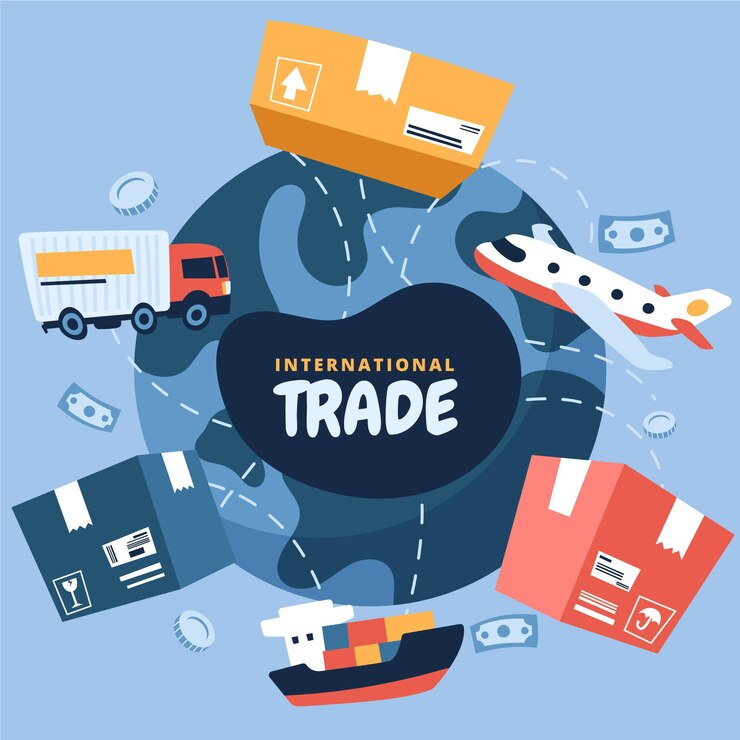Step-by-Step Guide to Securing Your Export Refund under GST
- 8 Aug 24
- 13 mins

Step-by-Step Guide to Securing Your Export Refund under GST
Key Takeaway
- The GST refund process is tailored to keep Indian exports competitive by allowing zero-rated supplies.
- Integration between GST and customs portals streamlines the refund process through automated data reconciliation.
- Exporters have flexible options for claiming refunds, either by paying IGST upfront or exporting under bond/LUT without payment.
- Adhering to the specific deadlines for refund claims is essential to ensure eligibility and recovery of funds.
- Proper documentation, including tax invoices and proof of export, is critical for a successful GST refund claim.
Goods and Services Tax (GST) stands as a pivotal reform, streamlining the tax rate and structure and aiming to enhance the ease of doing business. For exporters, knowing the nuances of the export refund under GST is not just beneficial—it's essential.
This process is integral to the economic fabric of the country, aiming firstly to ensure that businesses can operate with optimal liquidity by reclaiming taxes paid on inputs, and secondly, to maintain the competitiveness of Indian goods and services in the global market.
What is the GST refund process?
The GST refund process in India is a critical component of the tax structure, designed to support businesses engaged in the export of goods and services by ensuring they remain competitive on a global scale.
The process facilitates the recovery of the input tax credit (ITC) on inputs used to manufacture exported goods or services, thereby preventing the cascading effect of taxes and ensuring that exports are zero-rated. Here’s a closer look at how the GST refund process works for both exporting goods and services:

While exporting goods
When goods are exported from India, the merchant exporters have two options: export under bond or Letter of Undertaking (LUT) without paying GST, or export on payment of IGST and claim a refund of it. The process for claiming a refund varies slightly depending on the types of GST refunds.
- Goods without Payment of IGST: Exporters can export goods under a bond or LUT without paying IGST. Here, they are eligible to claim a refund of the ITC for the inputs used to produce such exported goods. The claim is filed through the filing of GST returns (GSTR-1 and GSTR-3B), where details of the exports and the input tax credit availed are provided.
- Goods with Payment of IGST: In this scenario, the exporter pays IGST at the time of export and then claims a refund of this amount. The shipping bill filed by the exporter at the customs department serves as the refund application. The integration of GST portals and customs systems facilitates an automatic process where the IGST paid is verified and refunded. The key document here is the shipping bill, which, along with the tax invoice, must clearly mention that the payment of IGST is made against the export.
While Exporting Services
Exporting services under GST follows a principle similar to goods but with some nuances in documentation and process:
- Services without Payment of IGST: Services exported without the payment of IGST are also treated as zero-rated supplies. The exporter must file a monthly or quarterly return in GSTR-1, detailing the services exported. Additionally, the exporter must file GSTR-3B to claim a refund of the ITC on inputs and input services used to provide the exported service. The refund is claimed against a bond or LUT, ensuring that the services are exported without the payment of integrated tax.
- Services with Payment of IGST: If the exporter opts to pay IGST on exported services, they can claim a refund of this tax. This involves declaring the payment of IGST on exported services in the GSTR-3B and providing details of such exports in GSTR-1. Proof of receipt of foreign exchange is crucial in this case, as it substantiates that the services were indeed exported.
This streamlined approach under GST for zero-rated supplies ensures that exporters can reclaim their input taxes, maintaining the competitiveness of Indian goods and services in the international market.
When can the refund be claimed?

The timing for claiming a GST refund is crucial and is governed by specific deadlines set forth in the GST legislation in India. Knowing these timelines is essential for businesses to ensure they do not miss out on reclaiming their rightful refunds.
| Scenario | Time Frame for Refund Claim |
|---|---|
| Export of Goods (With Payment of IGST) | Within 2 years from the date of export |
| Export of Goods (Without Payment of IGST) | Within 2 years from the date of export |
| Export of Services (With Payment of IGST) | Within 2 years from the date of receipt of payment in convertible foreign exchange |
| Export of Services (Without Payment of IGST) | Within 2 years from the date of receipt of payment in convertible foreign exchange |
| Accumulation of ITC due to Inverted Duty Structure | Within 2 years from the end of the financial year in which such claim for refund arises |
| Finalization of Provisional Assessment | Within 2 years from the date on which the tax is adjusted after final assessment |
| Excess Payment due to Error | Within 2 years from the date of payment |
| Refund to International Tourists | Within 2 months from the date of purchase and before exiting India |
Documents needed for GST export refund

Claiming a GST refund in India requires the submission of various document details to support the refund claim. These documents serve as proof of the transactions made and the taxes paid, and they help the authorities verify the legitimacy of the refund claim. The specific documents required can vary depending on the nature of the refund claim, but generally, the following documents are commonly needed:
1. GST Refund Application (Form GST RFD-01): This is the primary document where the registered taxpayer provides details of the amount of refund claimed. It must be filed electronically on the GST portal.
2. Statement of Relevant Invoices: Along with the refund application, a statement containing the details of the invoices on which the refund is claimed is required. For exports, this includes details of shipping bills or bills of export.
3. Copy of the Tax Invoice: The tax invoice issued for the transaction is a crucial document, as it provides evidence of the tax paid.
4. Proof of Export: For refund claims related to exports, proof of export such as shipping bills, bill of lading, airway bill, or any other relevant shipping document must be provided.
5. Bank Realization Certificate (BRC) or Foreign Inward Remittance Certificate (FIRC): For exports of services, proof of receipt of foreign currency is required, which can be provided through BRC or FIRC, evidencing the conversion of foreign exchange into Indian Rupees or direct receipt of foreign exchange.
6. Letter of Undertaking (LUT) or Bond: In cases where exports were made without payment of tax under LUT or bond, a copy of such LUT or bond is to be furnished.
7. GSTR-2A/2B and GSTR-3B: These GST returns are needed to demonstrate the tax paid on inputs and the input tax credit availed, which is crucial for claims related to the refund of unutilized input tax credit.
8. Ledger Extracts: Extracts from the electronic cash ledger and electronic credit ledger on the GST portal, showing the tax paid, can also be required to substantiate the payment of tax.
9. Any Other Supporting Documents: Depending on the specific case or as requested by the GST authorities, additional documents such as a detailed calculation sheet of the refund claimed, documents evidencing the reason for refund (like excess GST payment due to error), and any statutory declarations or certifications may be required.
Guidelines for submitting a pre-application form for a refund
Submitting a GST refund pre-application form is a crucial step for taxpayers seeking a refund under the Goods and Services Tax (GST) regime in India. This process involves several steps, aimed at ensuring that the claimant provides all necessary information and documentation to support their refund claim.
Here’s a step-by-step guide to submitting a refund pre-application form:
Step 1: Access the GST Portal: Begin by accessing the official GST portal. This is the central platform for all GST-related filings and information.
Step 2: Log In to Your Account: Use your credentials to log into your GST account. You will need your GSTIN and the password associated with your account.
Step 3: Navigate to the Refund Section: Once logged in, navigate to the ‘Services’ tab on the dashboard. Under ‘Services’, you will find the ‘Refunds’ option. Click on ‘Refunds’ to proceed.
Step 4: Select the Refund Application Type: Within the Refunds section, you will see an option for ‘Application for Refund’. Click on this to start the process. You will be prompted to select the type of refund you are applying for (e.g., export of goods, export of services, excess payment of tax, etc.).
Step 5: Fill in the Pre-Application Form: After selecting the appropriate refund type, you will be directed to the pre-application form. This form requires detailed information about your refund claim, including the relevant tax period for which you are claiming the refund, the amount, and the reason for the refund.
Ensure that all details are filled in accurately to avoid any discrepancies that could delay the refund process.
Step 6: Attach Required Documents: Based on the type of refund you are claiming, attach all required documents. This may include tax invoices, proof of export, bank realization certificates (for exports), and any other relevant documents. The GST portal provides a list of documents needed for each type of refund claim.
Ensure that all documents are in the prescribed format and size as specified on the GST portal.
Step 7: Verify and Submit the Form: Before submitting the refund form, verify all the information and attached documents for accuracy. Any errors or missing information can lead to the rejection of your tax refund claim. Once satisfied, submit the form electronically through the GST portal. You will receive an acknowledgement number for your submission, which you should note for future reference.
Step 8: Track the Application Refund Status: After submission, you can track the status of your refund application through the GST portal. The ‘Services’ > ‘Refunds’ > ‘Track Application Status’ option allows you to see real-time updates on your refund processing.
How to Claim Refund of Export Under GST?
Under the new GST return filing system, the process for claiming GST refunds for exports has been designed to be more streamlined and efficient. The aim is to reduce the compliance burden on exporters and expedite the refund process, thereby improving cash flows for businesses engaged in export activities. Here’s an overview of how the GST refund process for exports works under the new return filing system:
Automated Refund Process
- Automated Data Reconciliation: The new system enhances the automation of data reconciliation between the GST portal and the customs portal. This means that information related to exports, such as shipping bills and export invoices, is automatically matched, reducing the need for manual intervention and speeding up the refund process.
- Simplified Filing: Refund Applicant are required to declare their export transactions in their regular GST returns. The details of exports of goods are filed in the GSTR-1 (outward supplies return), where exporters declare their export invoices along with shipping bill details. For services, exporters declare their export supplies in detail in the same return. This information is crucial for processing refunds.
Direct Refund Claims
- Integrated System for Refund Claims: With the integration of the GST and customs systems, the refund claim process for IGST paid on exports of goods is significantly simplified. Once the export details filed in GSTR-1 are validated against the shipping bill data processed by the customs department, the system automatically processes the refund for IGST paid on exports without requiring a separate refund application.
- Refund of Input Tax Credit (ITC): For exporters who choose to export under a bond or LUT (Letter of Undertaking) without paying IGST, the process to claim a refund of the unutilized ITC has been streamlined. Exporters must file an application for refund of unutilized ITC on the GST portal, supported by details of inward and outward supplies, which are auto-populated through their filed returns.
Refund process Now Vs Then
The GST refund process for exports has become easier and more streamlined thanks to various reforms and the implementation of a more integrated digital system. The Indian government and the GST Council have made concerted efforts to simplify the process, reduce paperwork, and expedite the refund timelines to alleviate the cash flow challenges faced by exporters.
Despite these improvements, some exporters may still face challenges due to system glitches, documentation issues, or delays in processing. However, the overall trend has been towards simplification and efficiency, with continuous efforts by the authorities to address the concerns of the exporting community.
💡If you want to pay your GST with Credit Card, then download Pice Business Payment App. Pice is the one stop app for all paying all your business expenses.




















